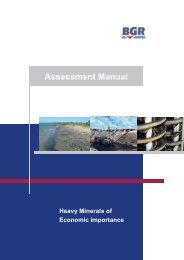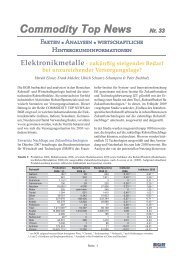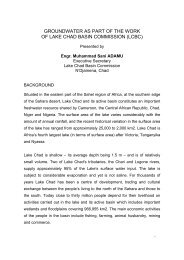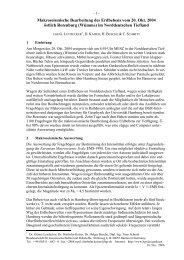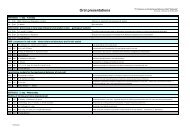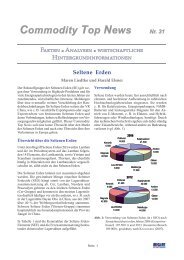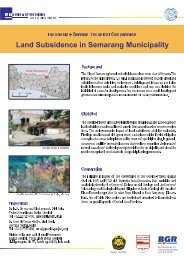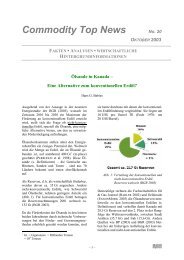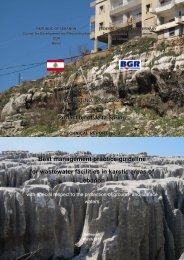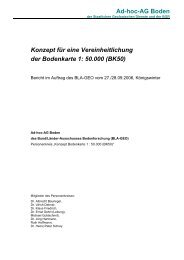THE SMOOTH SOUNDING GRAPH. A Manual for Field Work ... - BGR
THE SMOOTH SOUNDING GRAPH. A Manual for Field Work ... - BGR
THE SMOOTH SOUNDING GRAPH. A Manual for Field Work ... - BGR
Create successful ePaper yourself
Turn your PDF publications into a flip-book with our unique Google optimized e-Paper software.
43<br />
This result seems to be a paradoxon as we believe that now a nearly per-<br />
fect conductor (wire-mesh-fence) exists and consequently the resistivity<br />
should be reduced. But just the opposite happens, because the current<br />
already flows into the ground nearer to the centre point. This fact shall be<br />
explained once again by observing the current density j between the po-<br />
tential electrodes M and N.<br />
Fig.29<br />
The current electrodes are in position A and B on the surface. In the cen-<br />
tre of the lay-out between the potential electrodes M and N the current<br />
density "below our feet" will be recorded by <strong>for</strong>mula (11) in chapter 1.3.<br />
Without the wire-mesh-fence the current density in position A is greater<br />
than in position A’. But with the wire-mesh-fence it seems after moving<br />
from A to A' that we still have the same current density as in the position<br />
A, i.e. higher than it should be in A'. A higher density effects a higher<br />
voltage between the potential electrodes: the ρa point at A' drops out up-<br />
wards.<br />
On the other hand passing a wooden fence when the connecting wires are<br />
not touching the ground (Fig.29b) the curve will remain smooth.



